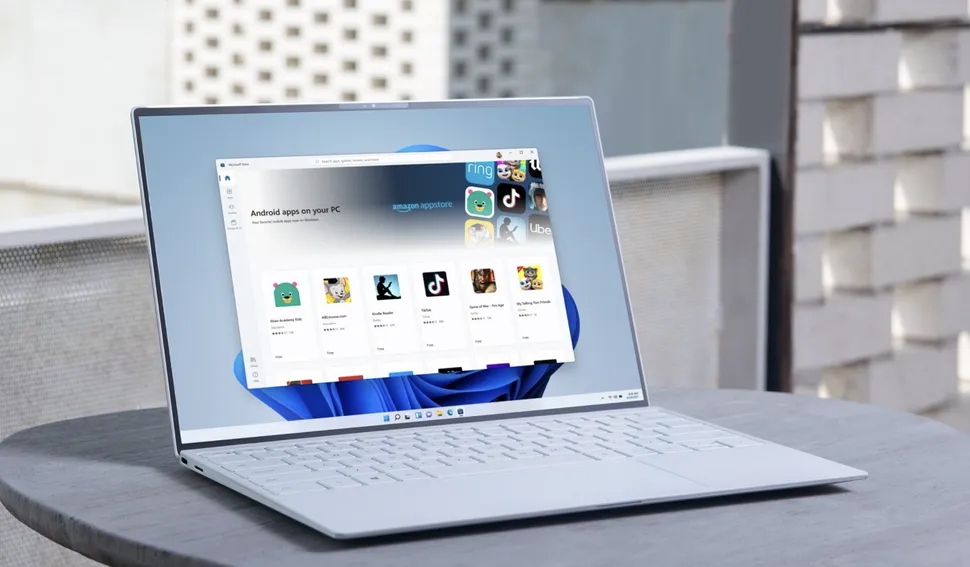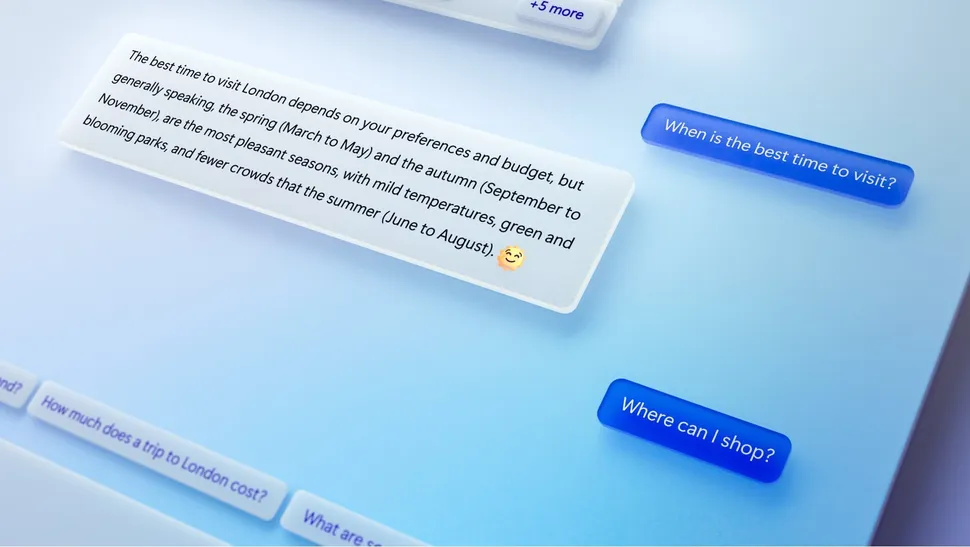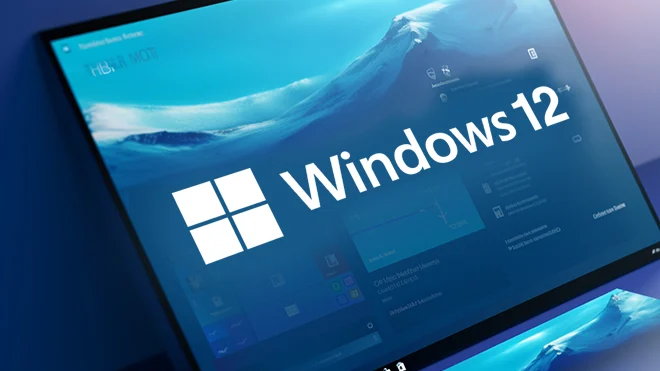A look at Microsoft Windows 12: leaks, rumors, expected AI integration, pricing, and more about Microsoft’s upcoming OS. Inside scoop on the future of Windows.
Microsoft Windows has come a long way since its first release in 1985. Over the past three decades, Windows has evolved from a simple GUI addition to MS-DOS to a fully-featured operating system powering over 1 billion devices worldwide.
Windows 11, the latest version, was released in 2021 with a redesigned interface and new features like Android app support. However, rumors and leaks about the next major version of Windows, potentially called Windows 12, have already started circling.
While Microsoft has not officially confirmed that Windows 12 is in development, several leaks have hinted that work is underway on the next big update. Some reports suggest Microsoft could preview Windows 12 as early as 2024, with a full release in 2025.
This new version aims to push Windows to the next level with major upgrades to visual design, performance, cloud connectivity, gaming technology, and more. Read on for an overview of the most exciting rumors and possibilities for Windows 12 based on leaks so far.
Possible Release Date of Microsoft Windows 12
Microsoft typically releases new versions of Windows every 2-3 years. Windows 10 was released in 2015, so we’re due for a new version soon.
Based on leaks from Windows Insider preview builds, many experts expect Microsoft to release Windows 12 sometime in 2022. There have been references to a major code update called “Next Valley” in Insider builds, which likely refers to the next generation version after Windows 10.
Some tech sites speculate it could arrive in spring 2022, around 3 years after the May 2019 update to Windows 10. However, the COVID-19 pandemic has disrupted many product release timelines, so it’s possible Windows 12 could be pushed back to late 2022 or 2023.
Either way, Microsoft will likely ramp up Insider testing in 2022 and gradually reveal more features and UI changes planned for Windows 12. We should have a better sense of their roadmap once preview builds start being tested. For now, the best guess is that Windows 12 will become available in 2022, roughly 3 years after the last major Windows 10 release.
New Visual Design
Microsoft is rumored to be working on a refreshed UI and expanded Fluent design for Windows 12. While details are scarce, reports indicate we may see updates to system fonts, iconography, the Start menu, Taskbar, Action Center, and built-in apps.
Expanded dark mode options are also expected. Windows 11 has made some strides in this area, but the implementation has received criticism for inconsistencies across apps. Windows 12 may address this through a more unified dark theme across the OS. There are also reports of a new “Mica” dark mode that adds subtle transparency effects.

The Fluent design system introduced in Windows 10 is expected to play a bigger role in Windows 12. We may see Fluent grow beyond iconography and system UI into a full styling specification that third-party developers can implement. This could result in a more cohesive and modern UI across the entire OS.
Overall, the goal seems to be to improve usability and aesthetics through design refinements and visual continuity. While we don’t expect a dramatically different look, noticeable updates to Windows’ interface are likely. The OS will build on its Fluent foundation with improved lighting, motion, materials, and consistency.
Performance Improvements of Microsoft Windows 12
Windows 12 is expected to offer noticeable performance improvements over Windows 11 and previous versions. With each new iteration of Windows, Microsoft seeks to enhance the operating system’s speed and responsiveness. Based on leaks and rumors, here are some of the potential performance upgrades coming in Windows 12:
Faster boot times.
Startup speed has improved with each version of Windows, and Windows 12 should boot even faster than before. The goal is to turn on and resume sleep nearly instantaneously. This will be achieved through optimization of the boot sequence and loading processes.
Enhanced multi-tasking.
Windows 12 promises better CPU and memory management, allowing users to run multiple demanding apps simultaneously without slowdowns. The system will dynamically allocate resources based on workload to enable smooth multi-tasking.
Better resource optimization
Windows 12 introduces a new ‘efficiency mode’ that optimizes background tasks and system resources for the apps you’re actively using. This ensures maximal performance and battery life while multi-tasking. The OS will learn your usage patterns to optimize itself automatically.
By reducing boot times,
smoothing out multi-tasking and optimizing resource allocation, Windows 12 aims to deliver a noticeably faster and more responsive user experience compared to previous versions. The performance upgrades will benefit both conventional PCs and mobile devices like laptops and tablets.
Gaming Features
Gaming will likely see major improvements in Windows 12. Microsoft has been investing heavily in gaming recently with acquisitions like Activision Blizzard, so we can expect Windows 12 to further integrate Xbox features into the OS.
One big upgrade will likely be a rebuilt and improved Xbox app for accessing Game Pass subscriptions directly through Windows. The app is expected to be faster, support more games, and have a refreshed interface optimized for finding and launching games quickly.
Windows 12 may also expand GamePass with additional subscription tiers or options to appeal to more gamers. Cloud streaming capabilities could be enhanced as well.
The latest DirectX 13 graphics API is rumored to launch alongside Windows 12. This will allow games to tap into the new capabilities of modern GPUs and provide performance boosts. Ray tracing support will expand along with new effects to make games more immersive.
Overall, Windows 12 aims to make PC gaming faster and more seamless. The Xbox integration will hopefully provide a console-quality experience for Game Pass users. For competitive gamers, the improvements to speed and performance will help maximize frame rates on high-end hardware.
AI and Cloud Integration
Microsoft is expected to greatly expand AI and cloud capabilities in Microsoft Windows 12. This will likely include:
Expanded intelligent assistants
Windows 12 may feature multiple intelligent assistants beyond just Cortana. These could specialize in different tasks like productivity, entertainment, smart home control, and more. The assistants may also integrate with Microsoft 365 cloud services for managing documents, email, calendar appointments, and accessing information.

Better Cortana integration
Expect Cortana to become more deeply integrated into the OS rather than a standalone app. Cortana voice commands could activate inside any app and gain new productivity features. Cortana may also gain conversational capabilities for more natural interactions.
Cloud sync and storage
Microsoft Windows 12 will likely have expanded cloud sync and storage powered by OneDrive and Azure. This could include new backup and recovery features, seamless syncing of settings and preferences across devices, more robust file versioning, and potentially unlimited storage or storage tiers. The cloud could also enable new capabilities, like streaming apps and accessing Windows from any device.
App Store and Software
Microsoft is expected to make improvements to the Windows Store in Microsoft Windows 12. There may be a redesigned interface to make it easier to discover new apps. The store could also highlight apps that take advantage of new Windows 12 features.
One exciting rumor is that Windows 12 may allow Android apps to run natively on Windows. This would significantly expand the app ecosystem available to Windows users. It’s not clear yet how Android app support would be implemented, but it could attract more developers to create Windows apps.
In terms of first-party apps, we expect to see new versions of classics like Paint, Notepad, Calculator, and more. These apps may get visual refreshes and new functionality. For example, Paint could gain more powerful editing tools to compete with other image editors.
There are also reports that Microsoft is developing new apps for Windows 12. This could include apps for managing cloud storage or improving device security. With Microsoft’s focus on AI, we may see more AI-powered apps built directly into Windows.
Overall, the app story for Windows 12 looks promising. More Android apps, an improved Store, and new first-party apps should make Windows more versatile for users. Apps are critical for any platform’s success, so Microsoft seems to be making them a priority.
Security and Privacy For Microsoft Windows 12
Security and privacy have been pain points for Windows users in the past, but Windows 12 promises to address these concerns head-on with several new features and capabilities.
Enhanced Protection Against Malware
Microsoft Windows 12 will include a rebuilt antivirus and anti-malware engine that utilizes advanced AI and machine learning algorithms to detect and block a wider range of threats. New sandboxing features will isolate untrusted applications to prevent them from making changes to the system or user files. Windows Defender SmartScreen also gains additional heuristics to identify phishing sites and dangerous downloads before users can access them.
More User Control Over Data Collection
In Windows 10, many users felt Microsoft overstepped with excessive data gathering for telemetry and advertising purposes. Windows 12 provides granular options for controlling what data is collected, including the ability to completely disable diagnostic and usage data collection as well as ad personalization. By default, the operating system will collect only the bare minimum data needed to keep systems stable.
Virtualization Security
With Microsoft Windows 12, Hyper-V virtualization now includes additional safeguards like UEFI secure boot for generation 2 virtual machines as well as dynamic root of trust for measurement (DRTM) and virtualization-based security (VBS). This improves the security isolation between the host and VMs to protect both from compromise. VMs also gain Trusted Platform Module (TPM) support for enabling BitLocker drive encryption.
With these and other planned security enhancements, Microsoft Windows 12 promises to be the most secure Windows version yet while also giving users more transparency and control over their data. The improved protection against modern threats and reduced data collection signify Microsoft’s commitment to rebuilding trust and confidence in consumers.
Hardware Requirements
Many users are curious about what type of PC hardware will be required or recommended to run Microsoft Windows 12 smoothly. While Microsoft has not confirmed anything officially yet, there are some reasonable speculations based on previous Windows releases and hardware trends.
The minimum hardware specs for Windows 12 will likely be similar to Windows 11’s requirements. This includes at least a dual-core 64-bit CPU, 4GB of RAM, 64GB of storage, and UEFI secure boot. Support for TPM 2.0 may still be required.
However, the recommended specs for running Microsoft Windows 12 will probably be higher. Users will likely need a newer quad- or octa-core CPU based on Intel’s 12th-generation Alder Lake or AMD’s Ryzen 5000 series. 8GB of RAM or higher will be strongly recommended for multitasking, as will an SSD rather than just a hard disk drive.
For GPUs, basic onboard graphics may work for the minimum specs, but a dedicated GPU like NVIDIA’s RTX 3000 series or AMD’s RX 6000 series will enable the best Windows 12 experience. More powerful GPUs will be recommended to take advantage of gaming features.
There is speculation that Windows 12 may require or work best with CPUs that support the newest instructions, like AVX-512, for advanced AI and machine learning performance. TPM 2.0 or even 3.0 support on the motherboard may become mandatory as well for enhanced security.
Overall, users with modern desktops and laptops purchased in the last 2–3 years should be able to upgrade to Microsoft Windows 12 smoothly. Very old systems predating Windows 11’s launch may struggle with the new OS unless they have recently upgraded their CPU, RAM, storage, and other components.
Price and Availability
Microsoft has not yet announced pricing or availability for Microsoft Windows 12, but based on previous Windows releases, we can make some educated guesses.
Upgrade Options
For most consumers, expect Microsoft Windows 12 to be a free upgrade for existing Windows 10 and Windows 11 users. This has been Microsoft’s strategy since Windows 10 launched in 2015.
However, businesses and organizations that purchase volume licensing of Windows may need to pay for upgrades, depending on their agreement.
Retail Purchases
Expect Windows 12 Home and Windows 12 Pro retail editions similar to previous versions.
Windows 12 Home will likely be aimed at mainstream consumer PCs and laptops. The Pro edition will have extra features for businesses and power users.
Base pricing for Microsoft Windows 12 Home and Pro will probably be similar to the Windows 11 pricing of $139 and $199, respectively.
Hardware Bundles
Many new PCs and laptops will likely come with Windows 12 pre-installed. Expect to see introductory deals and discounts for hardware bundled with Windows 12.
For businesses doing bulk deployments, Microsoft will probably offer special pricing for Windows 12 licenses bundled with new devices.
Some PC manufacturers may offer their own branded versions of Windows 12 on select models. These may come with additional custom software and services.
So in summary, Microsoft Windows 12 upgrade options will likely be free for most existing Windows users. Retail purchase prices should be on par with previous versions. And you can expect great deals on PCs and laptops bundled with Windows 12 as part of promotional pricing.
FAQ for Microsoft Windows 12.
Is Windows 12 a free upgrade for Windows 11 users?
Yes, Windows 12 is a free upgrade for existing Windows 11 users.
What are the minimum system requirements for Windows 12?
Windows 12 requires a compatible 64-bit processor, 4GB of RAM, and 64GB of storage space.
Can I run Android apps on Windows 12?
Yes, Windows 12 includes an Android app compatibility layer, allowing you to run Android apps on your PC.
What is the new security feature in Windows 12?
Windows 12 introduces “Guardian Mode,” an advanced security feature that enhances protection against malware and cyber threats.
Is there a dark mode in Windows 12?
Yes, Windows 12 offers a system-wide dark mode option for a more comfortable viewing experience in low-light environments.
How can I troubleshoot common issues in Windows 12?
To troubleshoot problems, use the built-in “Windows Troubleshooter” or check the Windows 12 support website for solutions.
Read more about such content here!

1 thought on “Microsoft Windows 12 (2024) Sneak Peek: AI & New Features, Release Date”